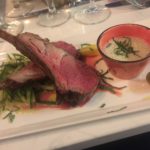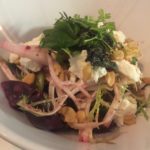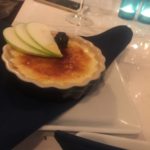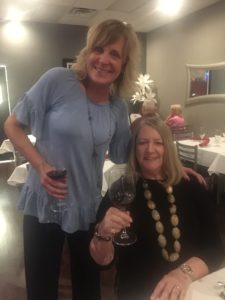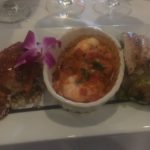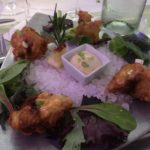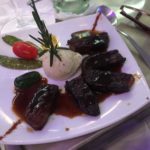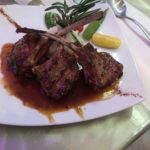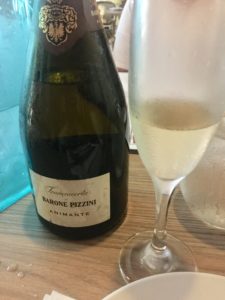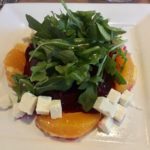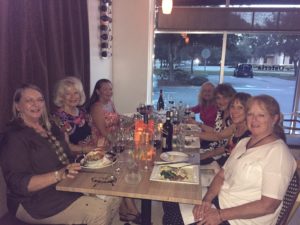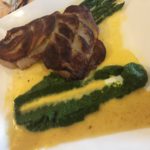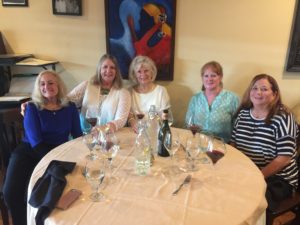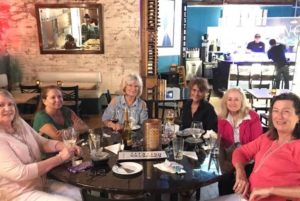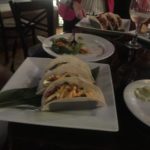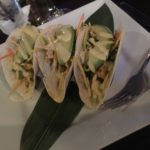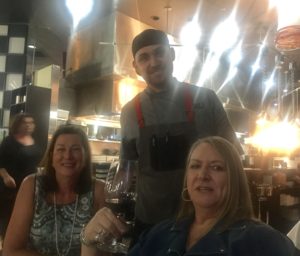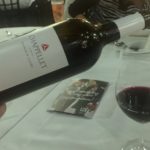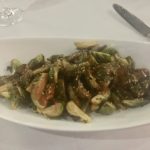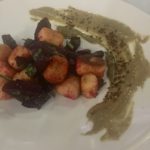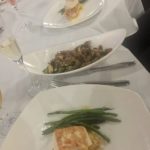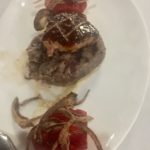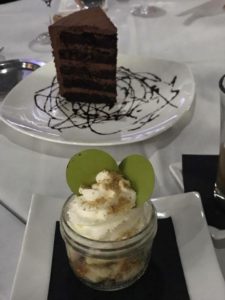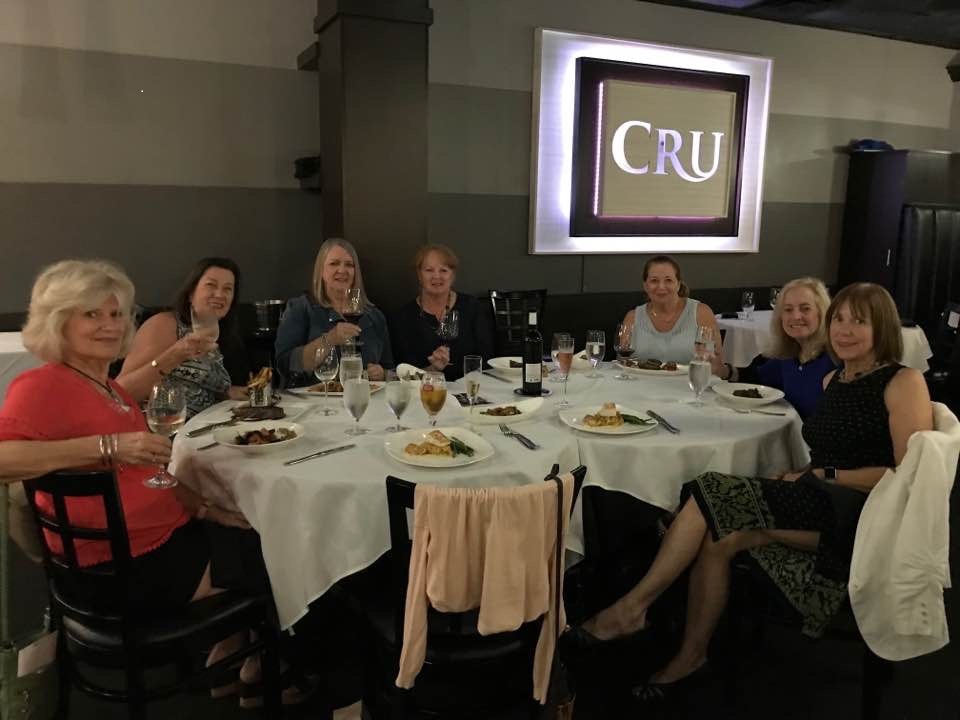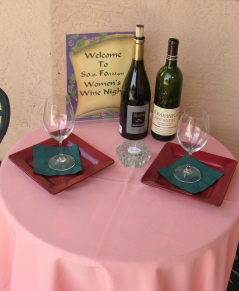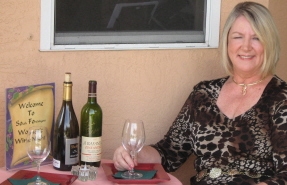
The Silk Road was a network of trade routes beginning in China and weaving all the way through the Middle East to Europe. The Chinese stake a claim to formally opening it back in 130 BC, but the Persians had a trade route called the Royal Road 300 years earlier. People travelled across the Silk Road with fruits and vegetables, livestock, grain, leather, tools, artwork, precious stones, metals and religious objects. Significant impact was made by their ideas and inventions. The commodities of paper and gunpowder have made quite an impact on history. We foodies can also thank the Silk Road traders for bringing us the spices of the East. Imagine how boring our food would be without them!
Right in the center of the Silk Road is Uzbekistan, a landlocked country in central Asia about the size of Spain. Three of the great Silk Road key stop-off cities were Samarkand, Bukhara and Khiva; all of them have been restored and are now UNESCO World Heritage Sites. Then there is Tashkent, the capital city of Uzbekistan. Tashkent was completely destroyed by an earthquake in 1966 leaving over 300,000 people homeless, but the entire city was completely rebuilt by the Soviets. Central Asia came firmly in control of Russia by the beginning of 1920 officially creating the Uzbek Soviet Socialist Republic in October 1924. It was not until September 1, 1991, that Uzbekistan was able to proclaim its National Independence Day thus becoming the Republic of Uzbekistan. The ethnicity of the approximately 33 million people who live there is primarily Uzbek who practice the Muslim religion.
In addition to having the fourth largest deposits of gold in the world and being the world’s fifth-largest exporter of cotton, the country’s cuisine is influenced by local agriculture as are many nations. Uzbek farms plenty of grains and has an abundance of sheep, which brings us to the country’s cuisine. We are fortunate here in the Fort Myers area to have an authentic Uzbekistan restaurant, The Silk Road. It is a small family owned and operated restaurant that makes you feel like you have been welcomed into their home to dine on the cuisine of Uzbek and Central Asia. An adventurous group of nine SOFO Wine Women recently dined there, a first time experience for everyone except me. Here is what you can expect to find on the menu should you choose to dine there, all of which would be typical in other Uzbek restaurants or family tables.
The signature dish of Uzbekistan is palov, a main course made with rice, grated carrots, onions and pieces of meat. Variations of it are served all day long in Uzbek and for all types of events. Our local Silk Road Restaurant includes chickpeas and raisins in their delicious palov topped with pieces of lamb.
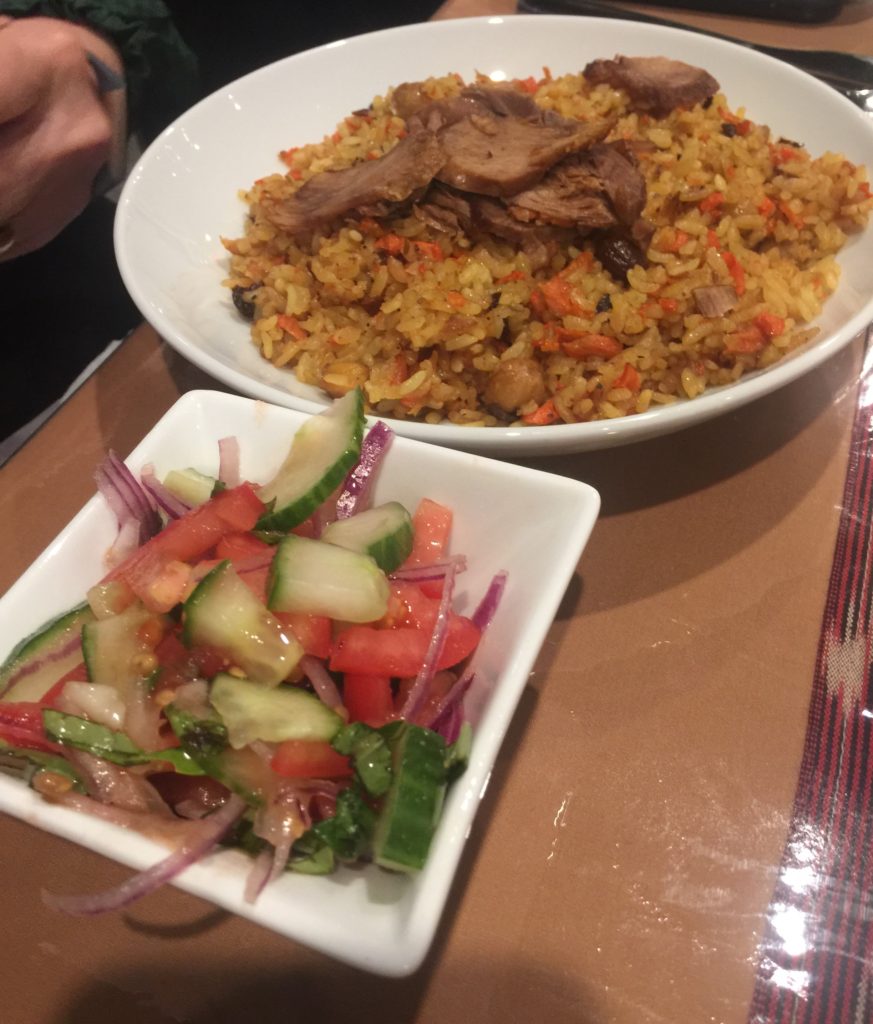
Lagman is a noodle based dish similar to lo mein served as a soup or a main course. Silk Road prepares it with beef, homemade noodles, green peppers, garlic, parsley, tomatoes and onions. They offer it as a soup, but you can make a meal of their lagman.
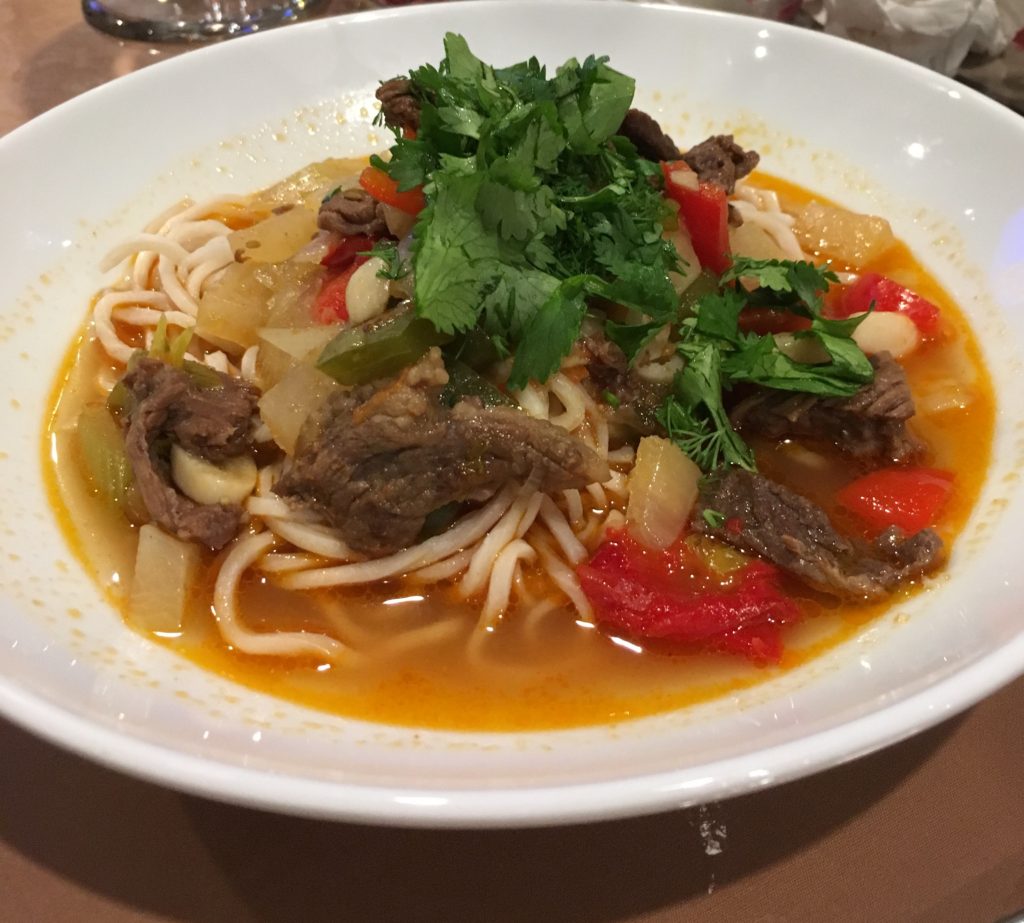
Other typical Uzbek soups available on the Silk Road menu are chuchvara, meat dumplings in a clear broth; borsch, beef soup with beets, carrots, cabbage and potatoes; and a lamb shank soup with vegetables.
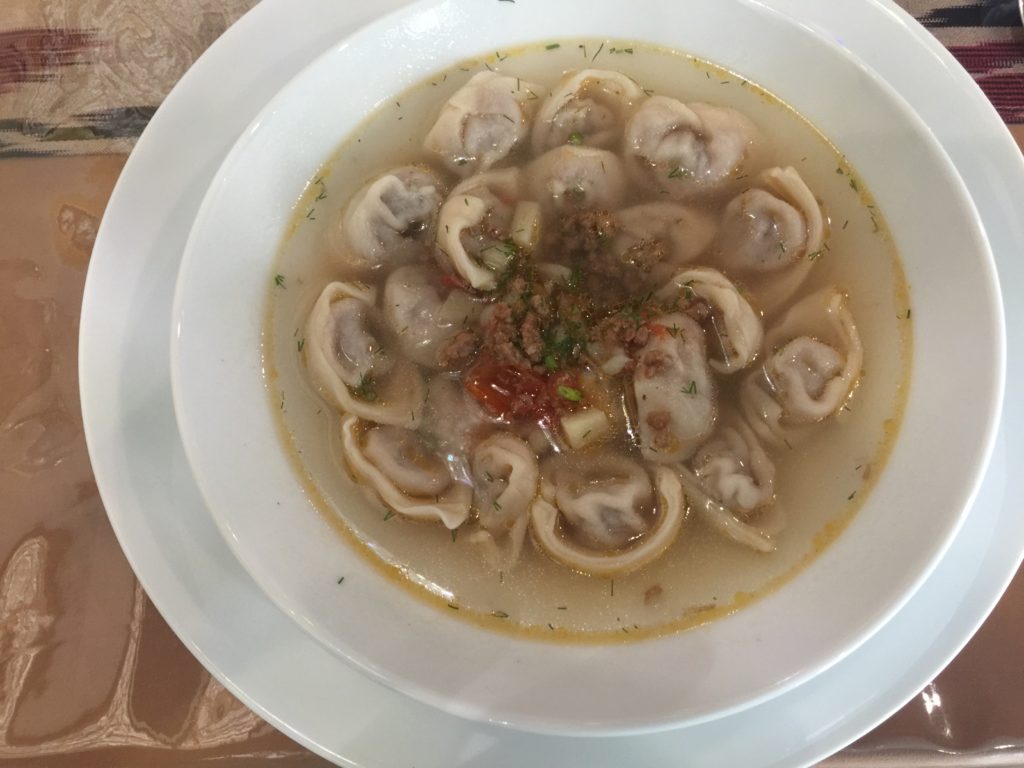
You can make a meal just sharing all of the tasty Uzbek appetizers, but be sure to have at least one or maybe two orders of Uzbek bread called non. It’s a significant part of Uzbek cuisine typically made in a tandoor clay oven. Non is shaped into a circular flat loaf with a thin depression in the center and a thicker rim around it. It is best right out of the oven. Just pull off a piece and enjoy.
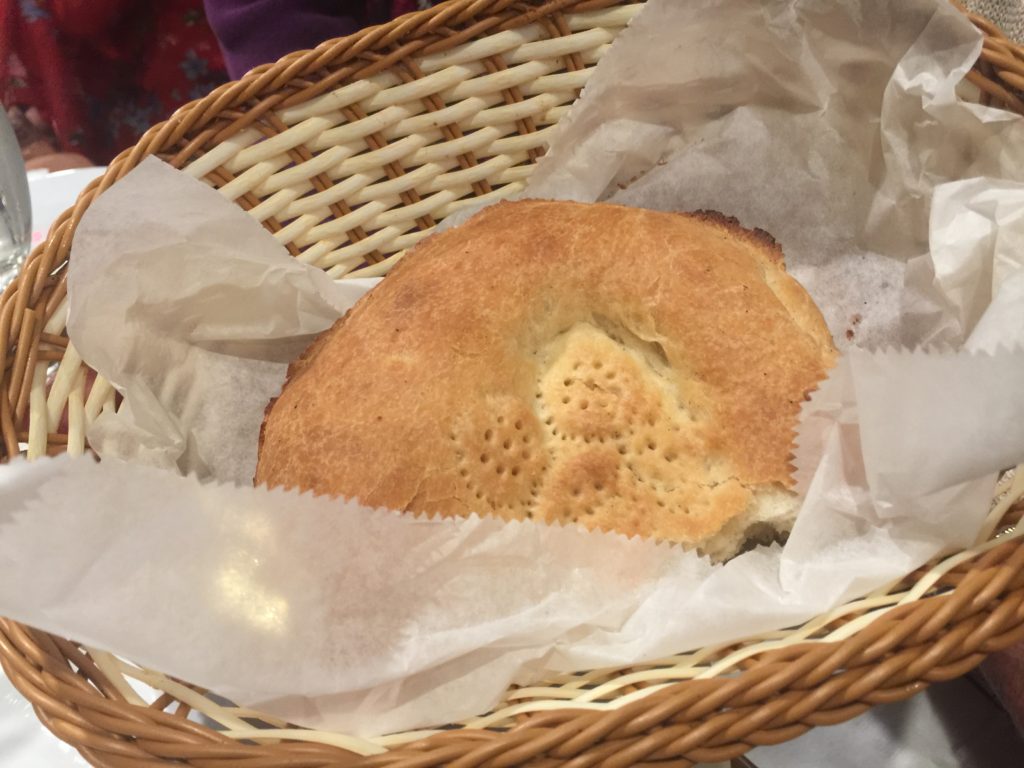
Samsa is a pastry stuffed with seasoned beef and chopped onions baked in the tandoor oven, and chebureki pastries are stuffed with beef and onion then deep fried. We passed on the zakuska beef tongue platter (although it is probably delicious) and moved on to my personal favorites – the baked eggplant platter which I really love with the homemade tomato sauce and garlic topped with cilantro, or for the non-cilantro lovers they will make it without that green stuff on the top. And my other favorite – blinchik, a tender little Uzbek crepe stuffed with ground beef and potatoes and served with chatni, a creamy yogurt sauce mixed with cilantro and garlic.
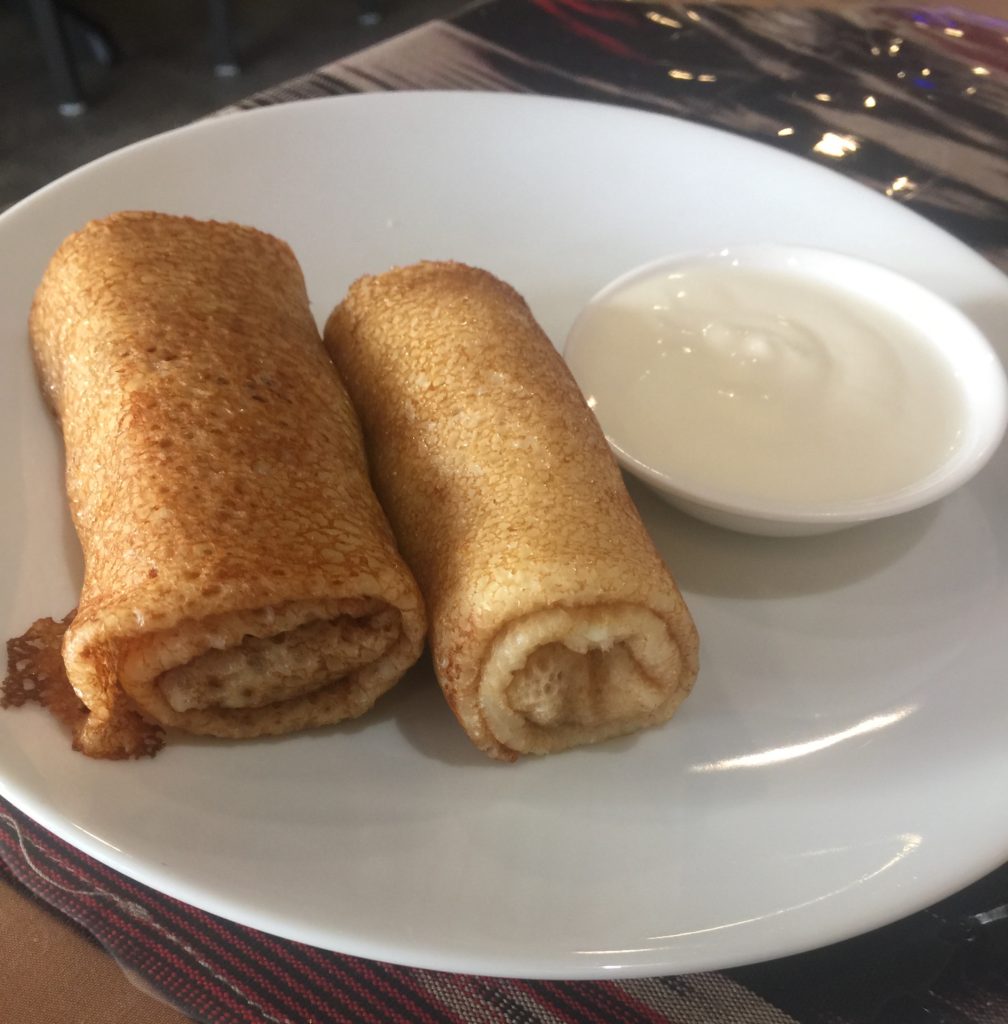
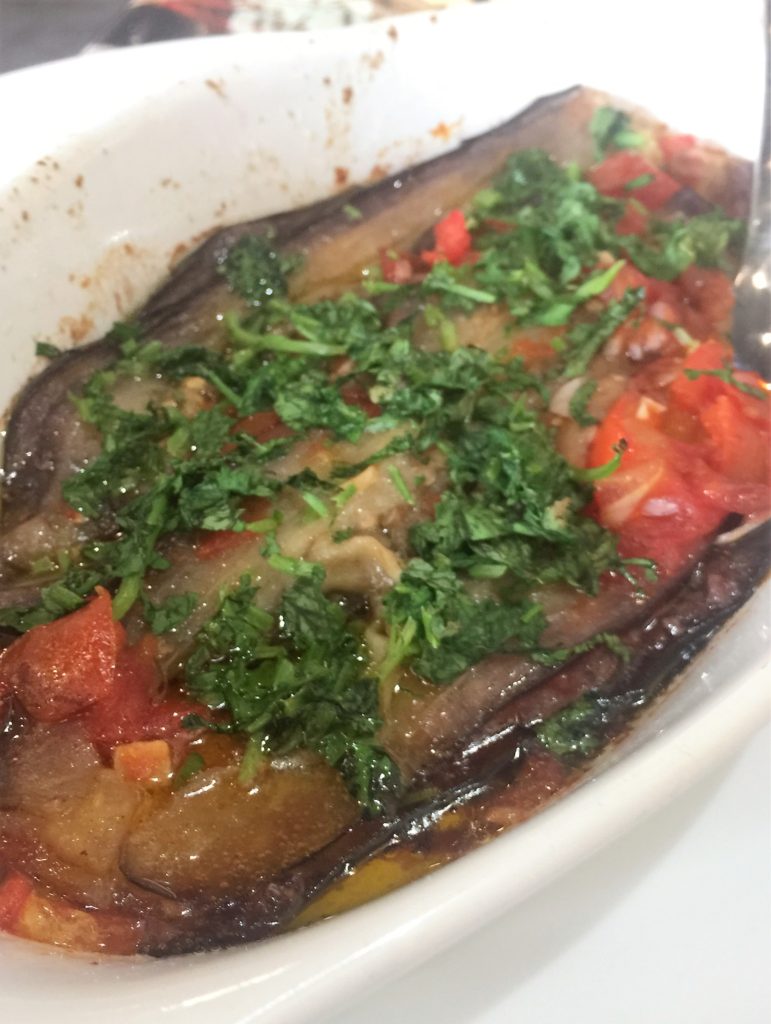
Next up are those amazing salads!!!! Uzbek is known for vegetables and the salads at Silk Road are fresh, fabulous and made of thin ribbon sliced veggies. The traditional Uzbek salad is called achichuk and it consists of thinly sliced tomatoes, onions, basil and cucumbers. The eggplant salad is a mixture of green peppers, cucumbers, carrots and eggplant and, just like its name on the menu, is delicious. The fresh beet salad has little ribbons of beets, carrots and cucumbers. If you love fresh beets like I do, you have to order this salad.
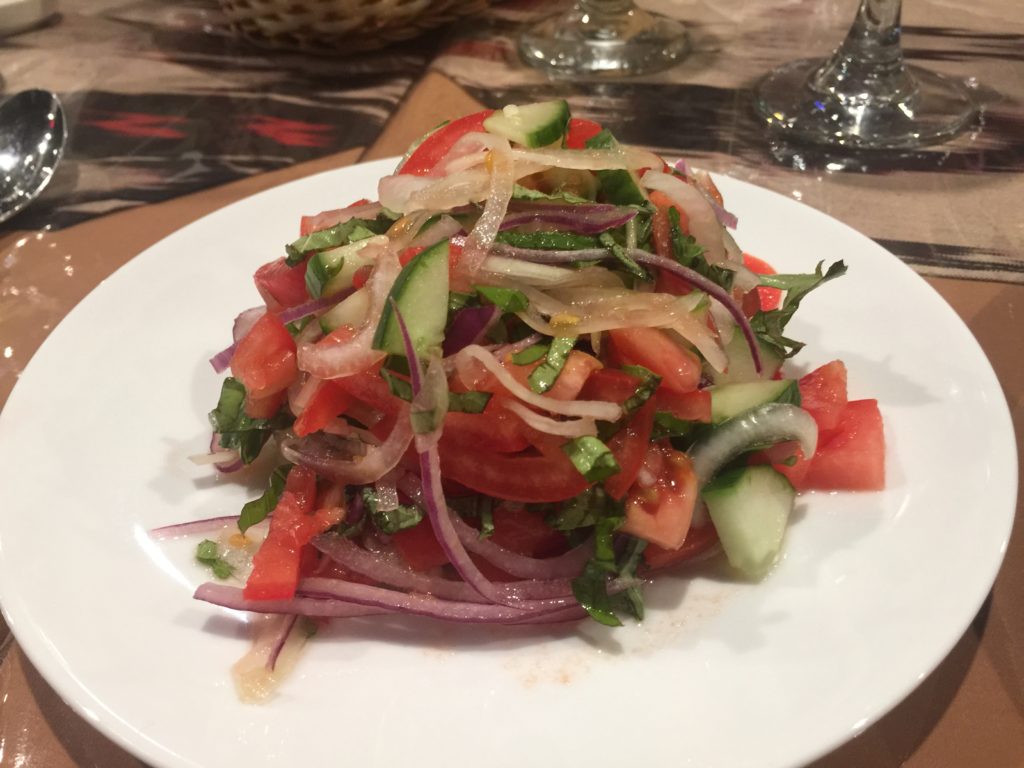
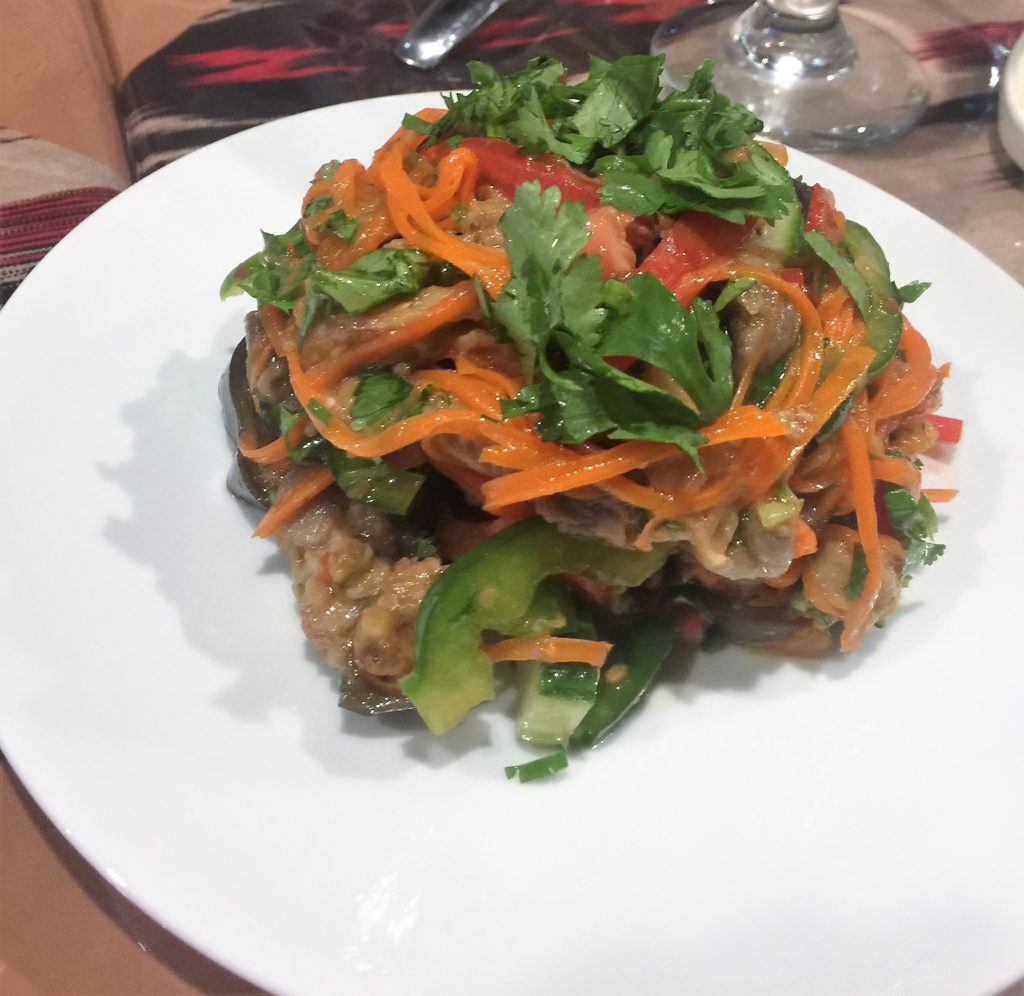
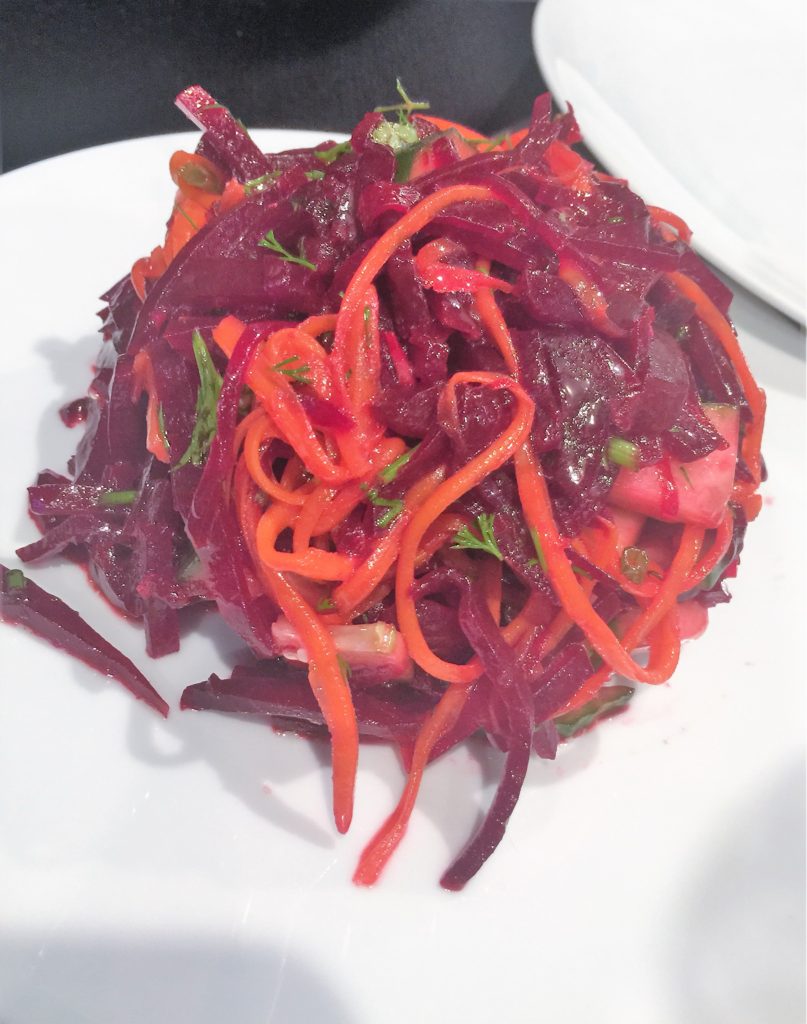
Be sure to save room after all those tasty appetizers and salads for the typical Uzbek entrees. In addition to the palov, there are kebab platters featuring your choice of lamb, beef, chicken, shrimp or lulya which is made from minced meat typically lamb and all are accompanied by Uzbek fried rice and chatni sauce.
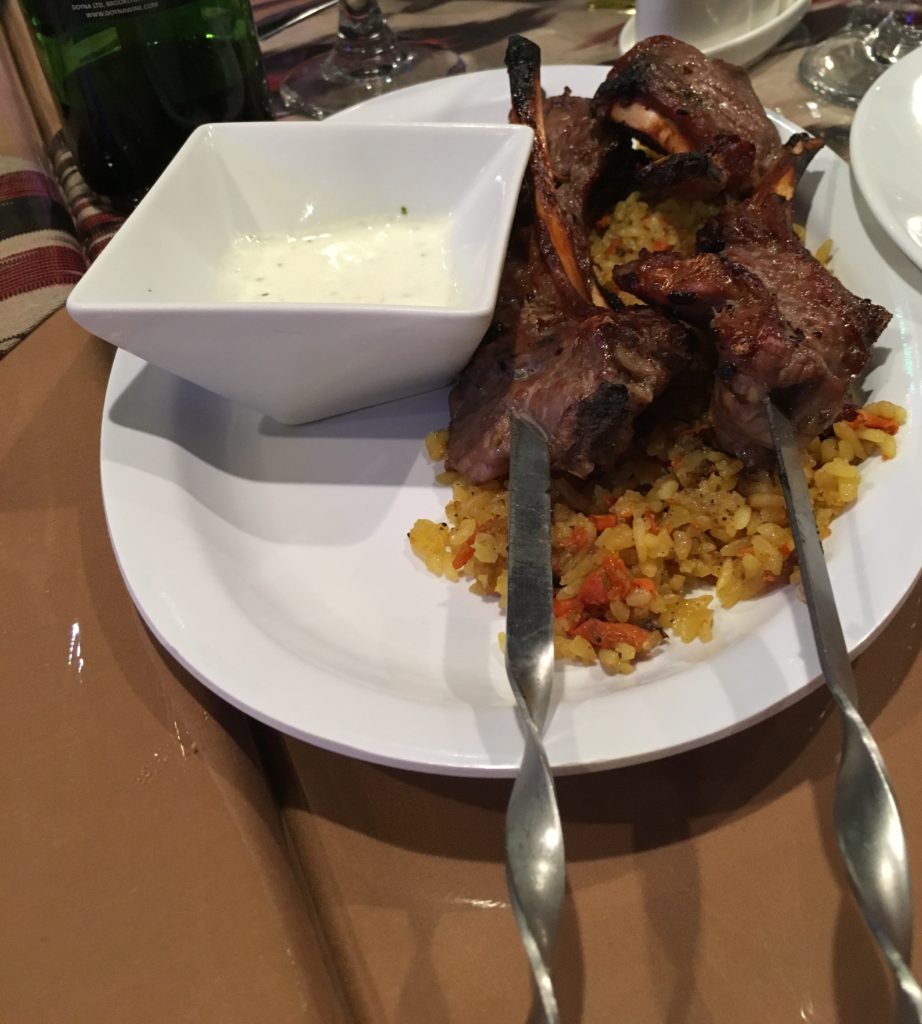
The beef shawarma was also popular at our table. Really flavorful shredded beef with tomatoes, onions and yogurt sauce is wrapped in a tender flat bread. It comes in a paper wrapper and you can eat it out of your hand, but I eventually gave in to my knife and fork.
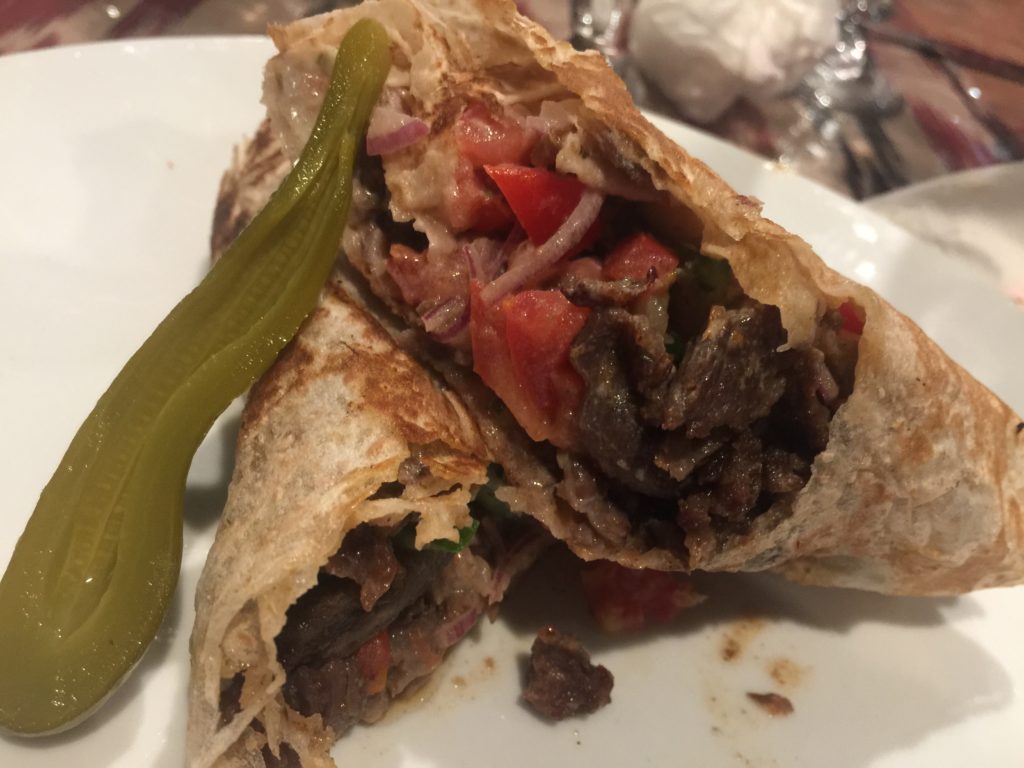
Somehow we did not order the homemade dolma but I am sure those grape leaves and cabbage stuffed with ground beef are quite delicious.
Last but not least are the beef manti. None of these beautiful little dumpling packages made it to our table that night, but I enjoyed them on a previous visit. Manti are dumplings filled with a mixture of beef and onion, wrapped up like little purses then steamed. I am even happier to say that I have made them at home and was really pleased to see that Silk Road mantis looked and tasted just like mine! That’s a good thing in case there was any doubt.
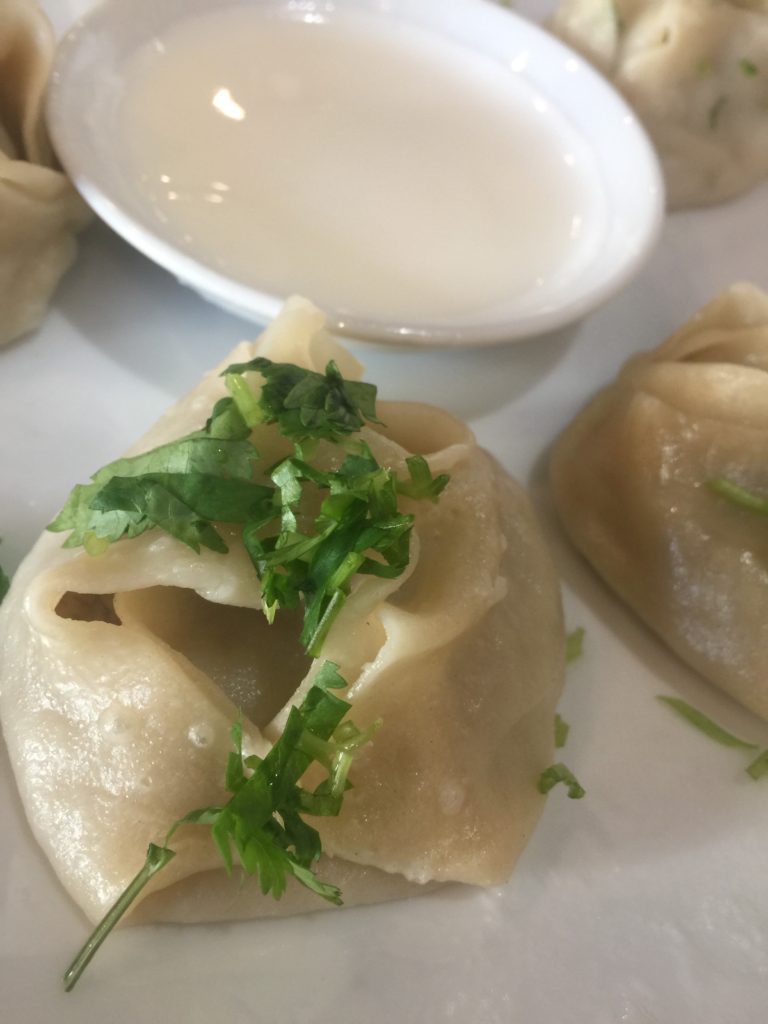
There was no room left for dessert that night – in fact, I saw a number of boxes going home with adequate food for another meal. Sadly I have yet to have the crème brulee, but I have previously eaten, and can give rave reviews for, the homemade baklava. Silk Road makes their baklava with pecans, walnuts, lemon, rose water and pistachios. It is truly delicious.
Since the name of our group is SOFO Wine Women, we were there to sample wine from Central Asia. Having had wine from Central Asia and right here at Silk Road before myself, I knew it was going to be an interesting experience for the rest of our group. Silk Road has some “traditional” wines on their wine list, but we were there for the whole experience. Not everyone is adventurous enough to try food and wine from unfamiliar or “exotic” countries, but we all jumped right in for the Central Asian red and white! Here is a bit of history about wine in Uzbek and the wines that we drank.
Vineyards have existed in Uzbek at least since the Roman times. After all, it is rumored that grape vines were introduced by Noah on Mount Ararat which is very close by in Turkey. Many of the vineyards here were destroyed during Soviet times as they were in many other countries in Central Asia, and many of the population are Muslims, which means alcohol was not prominent in their lives. All of this together means that there has not been a thriving wine industry in Uzbek.
There are currently 37 grape varieties grown here; many indigenous grape varieties did survive the Soviet era and International varieties (Cabernet Sauvignon, Pinot Noir, Riesling, etc.) have been planted. Most of the vineyards are in Samarkand, Surkhandarya and Tashkent Provinces. You probably won’t recognize many of their major grapes: Gulja, Hungarian Muscat, Muscat Rose, Aleatico, Rkatsiteli, Saperavi, Vassarga Black, May Black, Hindogni, Morastel, Tavkveri, Aligote, Bayan Shirey, Soyaki, Parkent Pink and Baktiyori except for the Riesling and Cabernet Sauvignon. There are 14 wineries with the oldest and most famous being the Khovrenko Wine Factory in Samarkand. A Russian merchant Dmitriy Filatov founded a small wine enterprise in 1868 which later became known as Khovrenko thanks to the Russian scientist winemaker of the same name. Khovrenko makes a lot of dessert wine which is not surprising since the sugar content of Uzbek grapes can reach 28%. Wines of the Soviet period were generally sweet and aromatic. Many of the “library” wines can be found in the Khovrenko 100-year-old wine cellar and museum.
The wine industry has become a national priority since 2006. Vineyards have evolved in the past 10 years or more with modernization of equipment, procedures and the planting of international varieties. While Khovrenko may still produce a lot of those Soviet profile wines, they are starting to develop new European-style technology. Uzbek President Shavkat Mirziyoyev has decreed a 60% increase in the state wine company’s wine exports by the end of 2021 from current levels. He wants the current area under cultivation doubled and recently visited France where he ordered 60,000 French cuttings including Chardonnay and Cabernet varieties and wants more grape seedlings from Italy, Chile and the United States. The president also ordered an informational and audit system on all alcohol producers, production and sales to be put into place and fully operating by the end of 2022. He has pledged to unshackle the economy. Unfortunately wine industry experts have a big concern about Uzbek’s ability to make fine wines. The climate is not as conducive for grape growing as neighboring Georgia whose wine industry is on the rise. Not to mention that Uzbeks are more likely to drink vodka than wine and Islam has a growing role in their society. But President Mirziyoev expects to change all of that and has directed that an annual international wine festival event be held in Uzbek. It might be a bit too early to make your travel plans!
The most important wine producer is the privately owned Mehnat Group created in 1993 at Tashkent. They make dry wines Pinot Noir, Cabernet Sauvignon, Saperavi and Hindogni for reds and Riesling, Rkatsiteli, Bayan Shirei and Kuldginskii for white wines. In Tashkent you will also find Tashkentvino, a winery that produces luxury vodkas and aged brandies in their new plant opened in 2010. While dining at the Silk Road, we shared a bottle of wine from Tashkentvino Orient Stone “1001 Nights”. Searching the internet could not provide me with any technical notes on this wine. What we do know is that it is advertised as a “dry red wine” with 12% alcohol. There are a number of wines listed on their website, but no “1001 Nights”! This wine marketed itself as a dry red, but we found it anything but dry and are most interested in knowing what grapes were in that bottle. If anyone out there knows the answer, please let me know. However, on the positive side, how many people do we know in the wine world who can say that they drank a bottle of wine from Uzbekistan? Only 8 other people that I know! I think it will be quite a few years before we have the opportunity to enjoy a bottle of fine Uzbek wine.
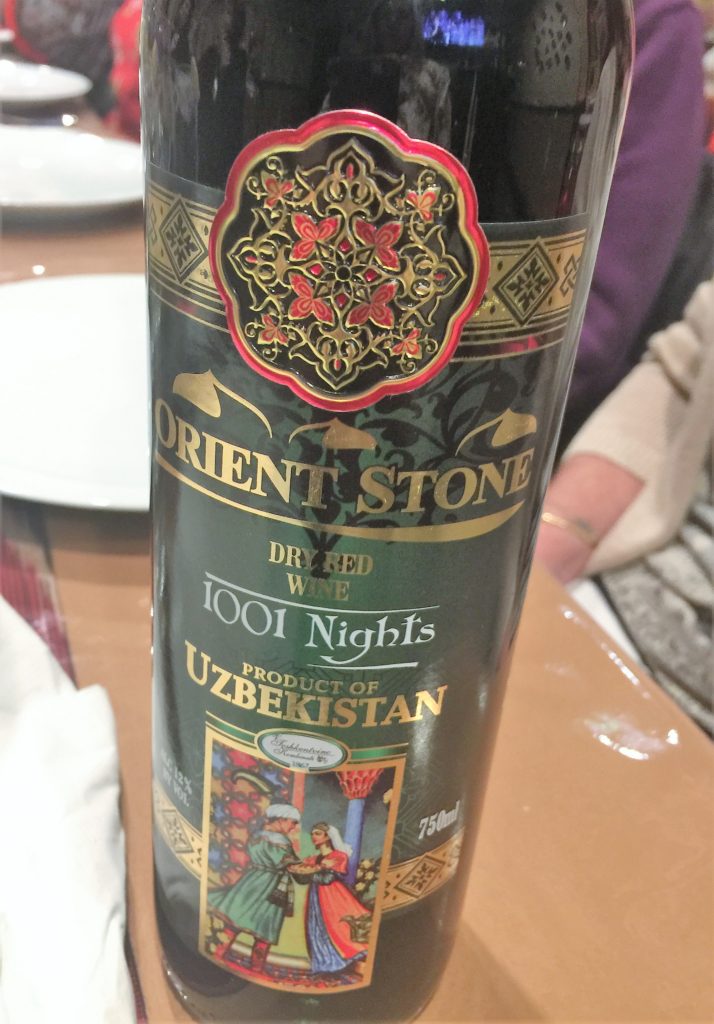
We may not have glowing reviews for our foray into Uzbek wine, but we did enjoy two wines from another ex-Soviet country, the Republic of Georgia, located in the Caucasus west across the Caspian Sea. Marani Rkatsiteli 2011 is a dry white wine made of 90 – 100% Rkatsiteli (ruh – KAT – see – TELL – ee) grapes. The grapes were grown in the Kakheti Region of Georgia and produce a light crisp wine with a light straw color, aromas of peaches and apricots with some floral notes. It delivers yellow fruit aromas with a lively acidity and fresh finish. This wine was a perfect pairing for all of those wonderful salads and appetizers prepared by Silk Road.
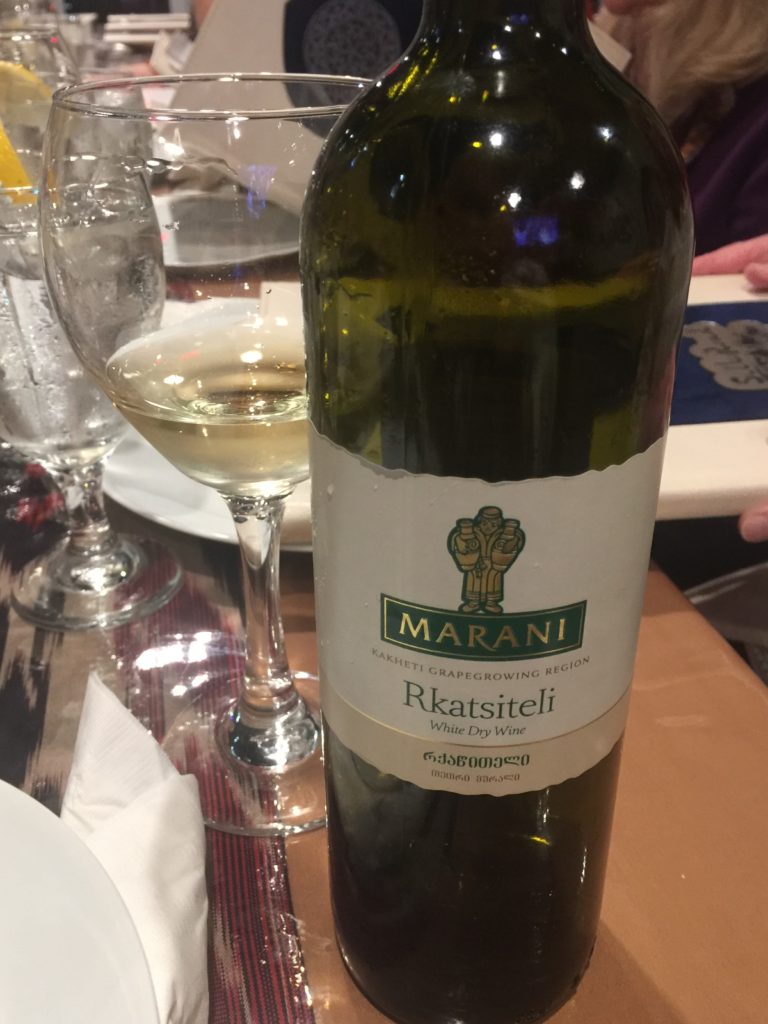
The Rkatsiteli grape has been indigenous to Georgia for several millennia, and now plays a significant role in many countries of the Caucasus area. I was introduced to this grape last year in a most enjoyable bottle of 2017 Tikves Rkatsiteli from the Republic of Macedonia. You can also find this grape here in the northeast US mainly around the Finger Lakes and in Virginia.
Next up was a 50-50 blend of red dry wine Cabernet- Saperavi 2015 Kakhuri Gvinis Marani winery from the Kakheti region of Georgia. The wine had “a dark-ruby color and aroma of red cherry, black current, plums and a hint of vanilla with a smooth and long aftertaste” just as indicated on the back label and 12.5% alcohol. The Saperavi grape is a dark-skinned pink-fleshed variety indigenous to Georgia now grown throughout the Caucasus and the former Soviet states. Saperavi is especially unusual because it is a Teinturier type of grape meaning that it’s a red grape with dark skin and dark or pink flesh. (Regular red grapes have dark skins with clear flesh.) Alicante Bouschet is also a Teinturier grape variety. Winemakers use them in their blend sometimes when they want to add color to the wine, which works well since “Teinturier” (tan-tewr-HER) means “to dye or stain” in French. You can also find Saperavi grapes in the Finger Lakes AVA of New York in the US and the Australian state of Victoria.
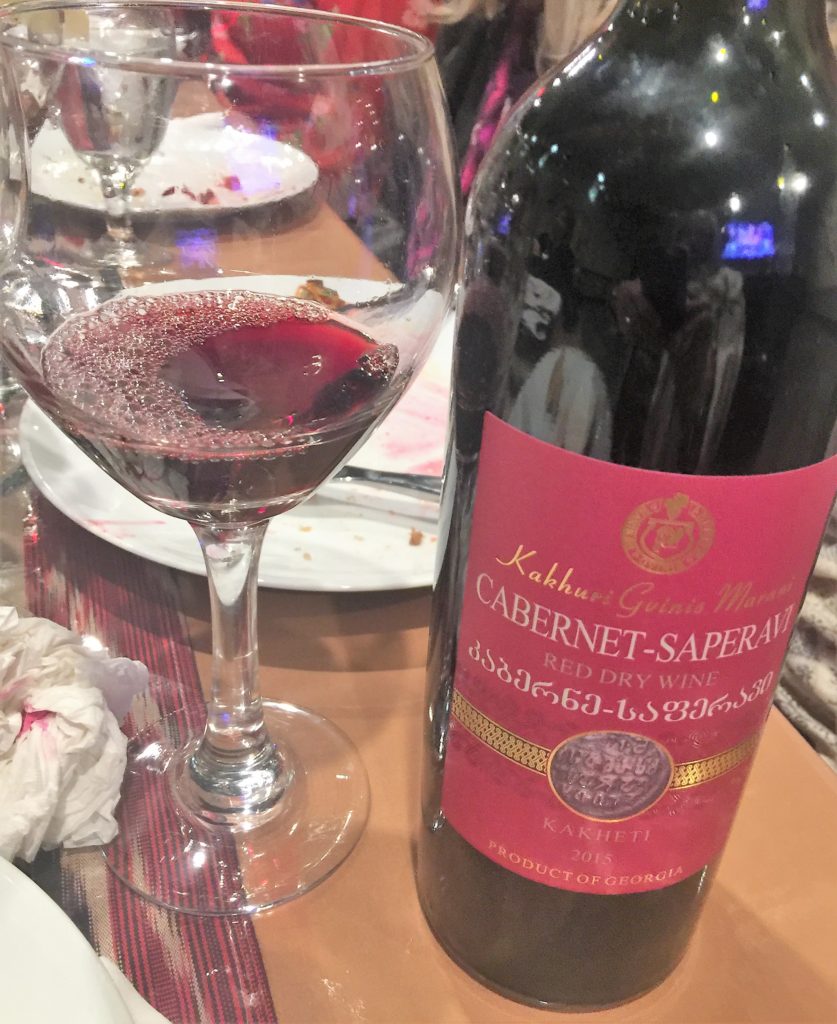
Cabernet-Saperavi Dry Red Blend from Georgia
I would recommend both the Rkatsiteli and Cabernet-Saperavi blends if you have the opportunity to try them at Silk Road or anywhere else unless you are a fan of sweeter wines. Who knows? I may be writing about the fine wines of Uzbekistan 10 or 15 years from now!
SOFO Wine Diva, forkandcorkdivine.com
1/19/2019
Note: The Silk Road Restaurant is located at 8646 Gladiolus Drive, Fort Myers, FL 33908




